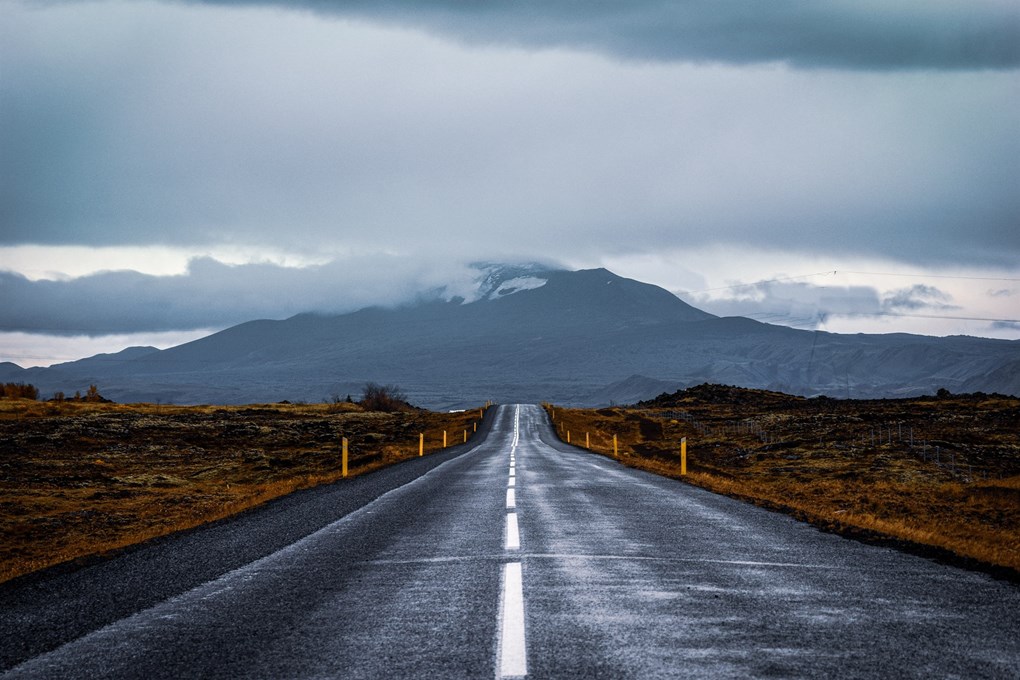
Table of Contents
- Quick Facts About Iceland’s Ring Road
- How Long Does it Take to Drive the Ring Road in Iceland?
- What’s The Best Way to Explore the Ring Road?
- What are the Best Attractions on the Ring Road of Iceland?
- What is the Best Time to Do the Ring Road of Iceland?
- What car do I need for the Ring Road of Iceland?
- Is the Iceland Ring Road Worth Travelling?
- A Few Closing Tips
The Ring Road of Iceland is the most popular tourist driving route in the country. However, taking on this long highway that stretches around the entirety of the island is no easy task. Driving the Ring Road of Iceland requires careful planning, in order to ensure you see only the best attractions of your road trip in Iceland. But don’t worry — we’re here to help.
We’re going to answer some of your most-asked questions about Iceland’s Ring Road, including…
- How long does it take to drive the Ring Road of Iceland?
- What’s the best month to drive the Ring Road in Iceland?
- Can you drive the Ring Road in Iceland in the winter?
- What are the best attractions on the Ring Road of Iceland?
- What attractions are worth detouring off of the Ring Road in Iceland?
- Is Iceland’s Ring Road worth driving at all?
To learn the answers to these questions and more, keep reading.
Quick Facts About Iceland’s Ring Road
First things first, here are a few key facts you’ll want to know about the Ring Road of Iceland before you start planning your Iceland Ring Road road trip.
- The Ring Road is Iceland’s main road.
Iceland has one main road: the Ring Road, or more formally known as Route 1, but also sometimes called the Circle of Iceland. It’s quite literally a circular road that goes around the whole island. If you’re travelling anywhere in Iceland, you’ll end up on the Ring Road at some point, whether you’re just doing a short trip between a few spots, or you’re seeing the entire country.
- The Ring Road is nearly 1,000 miles and mostly paved.
The Ring Road is 1,332 kilometres or 828 miles. Nearly all of it is paved (98% of it, at least) and it’s primarily all two lanes (although there are some bridges with one lane). The speed limit on most of the Ring Road is 90 kilometres per hour or 55 miles per hour.
- The Ring Road is extremely popular.
Iceland’s Ring Road is the most popular self-driving route for tourists who choose to rent a car in Iceland. It’s the easiest way to see the majority of the country, as it’s typically well maintained and kept clear of snow.
- You can’t see all of Iceland on the Ring Road.
While you can certainly see a lot of Iceland while on Route 1, you won’t see every single region. The route sticks primarily to the coastline. If you want to see every region in the country, you’ll need to take some detours. However, sticking to only Route 1 will still allow you to see all the most popular attractions and towns in Iceland.
- Road conditions in the Ring Road vary.
The road conditions along the Ring Road vary greatly between summer and winter. While the road is mostly accessible and kept clear of snow all year, sometimes changing weather conditions can prove problematic. For this reason, it’s important to arm yourself with the knowledge you need to travel around Iceland in the winter.
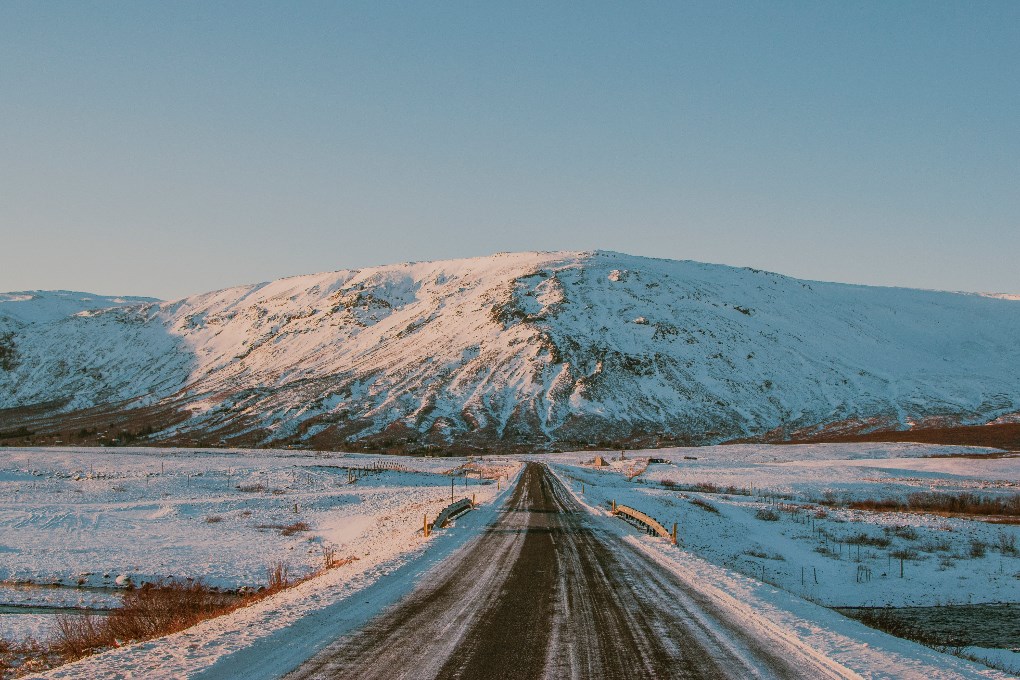
How Long Does it Take to Drive the Ring Road in Iceland?
If you were to drive the Ring Road in Iceland from start to finish, without any stops, then you could feasibly drive the Ring Road in about 16 hours. But who wants to do that? The whole point of driving the Ring Road is so that you can see all of the amazing sights along with it!
In order to fully experience all that the Ring Road offers, it’s recommended that you spend, at a bare minimum, seven days travelling along Route 1. This will require you to move quickly, but will still allow you to see most of the top spots.
If, however, you want to spend more time exploring and not have to rush, it’s advised that you set aside 10 to 14 days for your trip around the circle. If you have even more time and are coming in the summer season, you can extend your trip to the Westfjords or Highlands, too (though you’ll need to rent a 4x4 in Iceland if you plan on visiting either of these regions).
This advised timeframe is adjusted during the winter, though. Between October and March, we recommend setting aside 10 to 14 days at minimum for your trip and never try to do Route 1 in seven days. This is because the harsh winter weather can impede your travel; if you end up stranded in one location for a day or two as you wait out a snowstorm, it could throw off your entire itinerary, if you’re not careful. Additionally, you have to account for less daylight in the winter, meaning less time to see outdoor attractions (on some winter days, we have as little as five hours of daylight!).
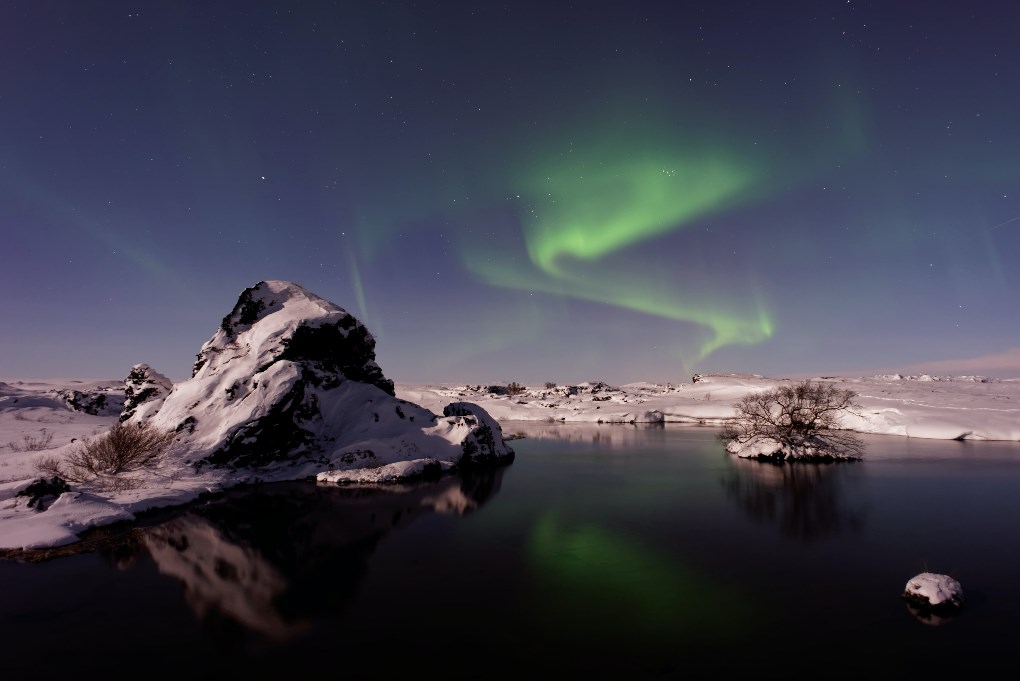
In this article, you will find the best self-drive itinerary for winter and summer if you are planning a 10-day trip to Iceland.
If you decide to travel the Ring Road in summer, you can save time by not booking accommodations off the route, but by renting a campervan in Iceland, so you can sleep along the way.
What’s The Best Way to Explore the Ring Road?
The best way to see the Circle of Iceland is by car. If you rent a car in Iceland, you’ll be guaranteed the freedom and flexibility you need for an enjoyable and stress-free trip around Route 1. Need more info? Check out our full guide to renting a car in Iceland.
Which way do you drive the Ring Road?
Once you have your rental car, you may be wondering what’s the best way to drive the Ring Road, but there’s really no one answer. You can drive the Ring Road in whatever direction you want. However, we recommend driving the route in a counterclockwise direction, starting around Reykjavik. This allows you to see some of the more popular attractions on the Ring Road first, near the Golden Circle.
What are the Best Attractions on the Ring Road of Iceland?
As mentioned, most of the best attractions in Iceland are the same ones that you find along the Ring Road, but not all of Iceland’s coolest spots are here. Some of the attractions and regions that aren’t on the Ring Road include the Golden Circle, the Blue Lagoon, the Eastfjords, the Arctic Coast Way, the Snaefellsnes Peninsula, the Westfjords and the Icelandic Highlands.
In this map, you will find all the famous stops in the Ring Road of Iceland, as well as some interesting detours that are worth visiting.
To see all the main attractions on the Ring Road, as well as take some cool detours to see spots and regions like those above, here’s what to add to your itinerary.
Ring Road Top Attractions in the South of Iceland
- Hveragerdi — a small town along Route 1 that’s known as a gateway to South Iceland and nicknamed The Hot Spring Town due to its geothermal activity; this is also a good starting point to hike Reykjadalur
- Seljalandsfoss Waterfall and Gljufrabui Waterfall — the former of which is one of Iceland’s most famous waterfalls and you can walk behind the water curtain, while the latter is a hidden waterfall nearby, a bit of a Route 1 hidden gem.
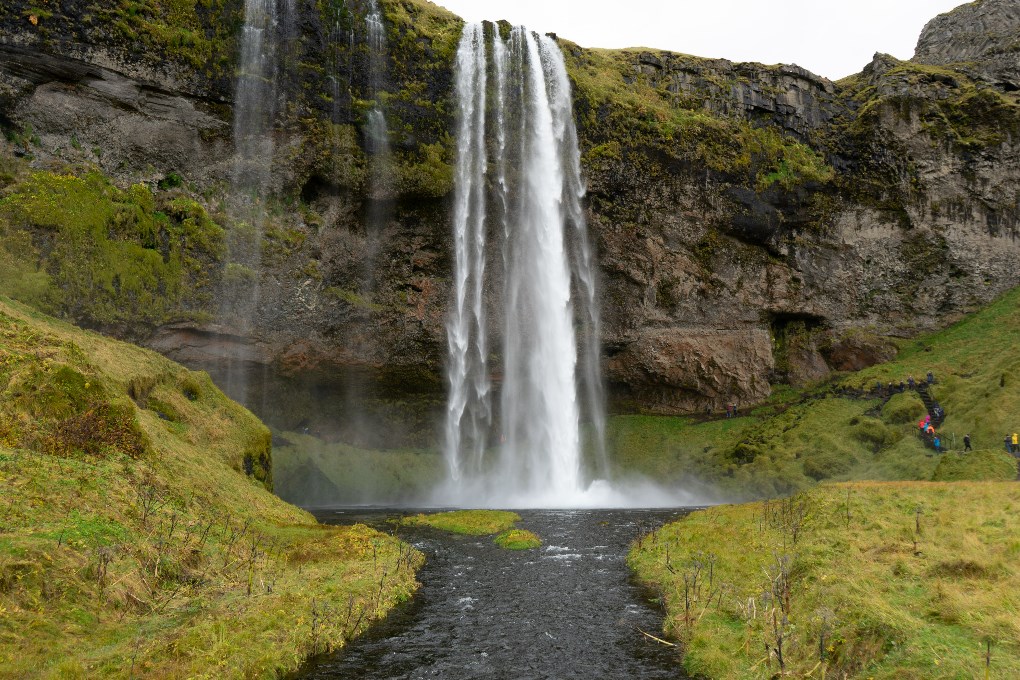
- Eyjafjallajokull Glacier Volcano — a stratovolcano that can be easily seen from the road and that erupted in 2010, causing a disruption to air travel across Europe
- Skogafoss Waterfall — one of the largest waterfalls in Iceland and one that’s easily accessible — you can walk right up to it!
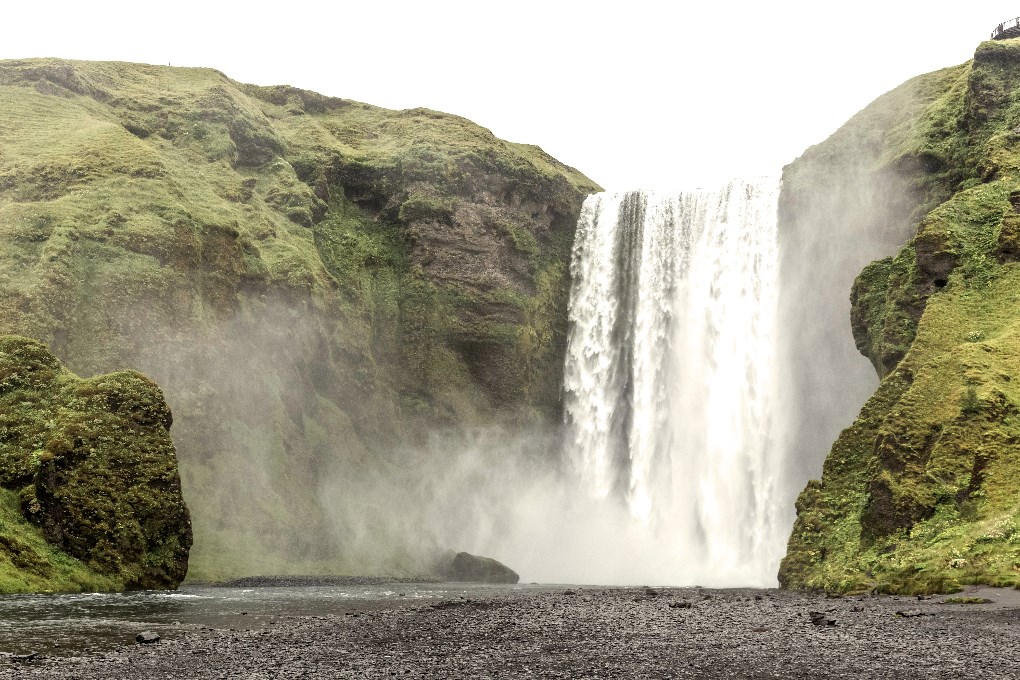
- The DC3 plane wreck — a famous wrecked plane that’s situated on a black sand beach; it’s now one of the most photographed spots in Iceland
- Dyrholaey — a South Iceland peninsula with amazing water views and a lighthouse
- Reynisfjara and Reynisdrangar — a black sand beach with rock formations situated off the coast
- Vik í Myrdal — the southernmost village in Iceland and a popular stop for those travelling on South Iceland road trips
- Kirkjubaejarklaustur and Fjadrarglufur Canyon — a southern Iceland town and one of Iceland’s most famous canyons
- Skaftafell National Park and Svartifoss Waterfall — a national park with lots of hiking trails and glacier hike tours, and its most popular waterfall site
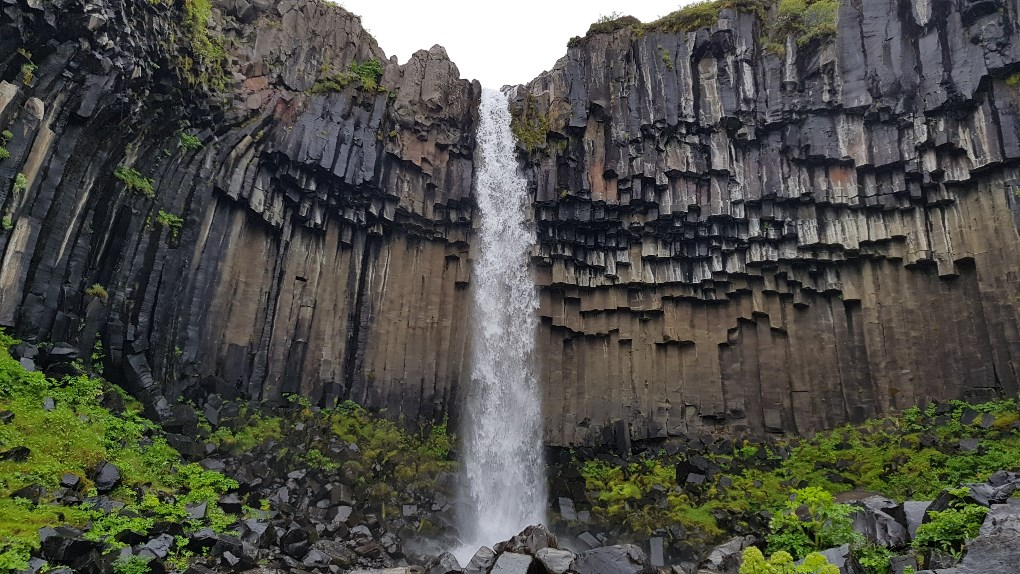
- Jokulsarlon Glacier Lagoon and Diamond Beach — a beautiful glacier-filled lake, known as the Jewel of the Crown of Iceland, that boasts a black sand beach filled with ice that looks literally like diamonds
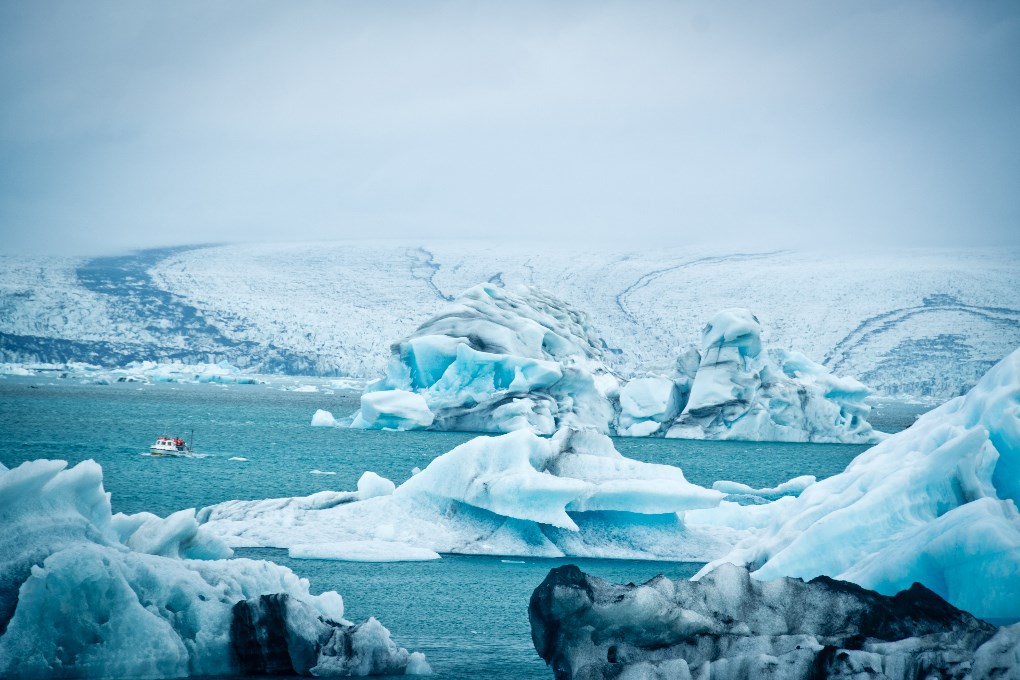
- Vatnajokull National Park — a huge national park that features the largest glacier in Iceland
Want to take a detour while you’re travelling the Ring Road in the South of Iceland? Go around the Golden Circle, which is another popular driving route that’s much smaller and takes only about half a day to a full day, depending on how fast you’re going. In fact, many travellers start their journey with the Golden Circle and then move off of it and onto the Ring Road, travelling south. The Golden Circle’s most famous spots include Thingvellir National Park, Geysir and Gullfoss Waterfall.
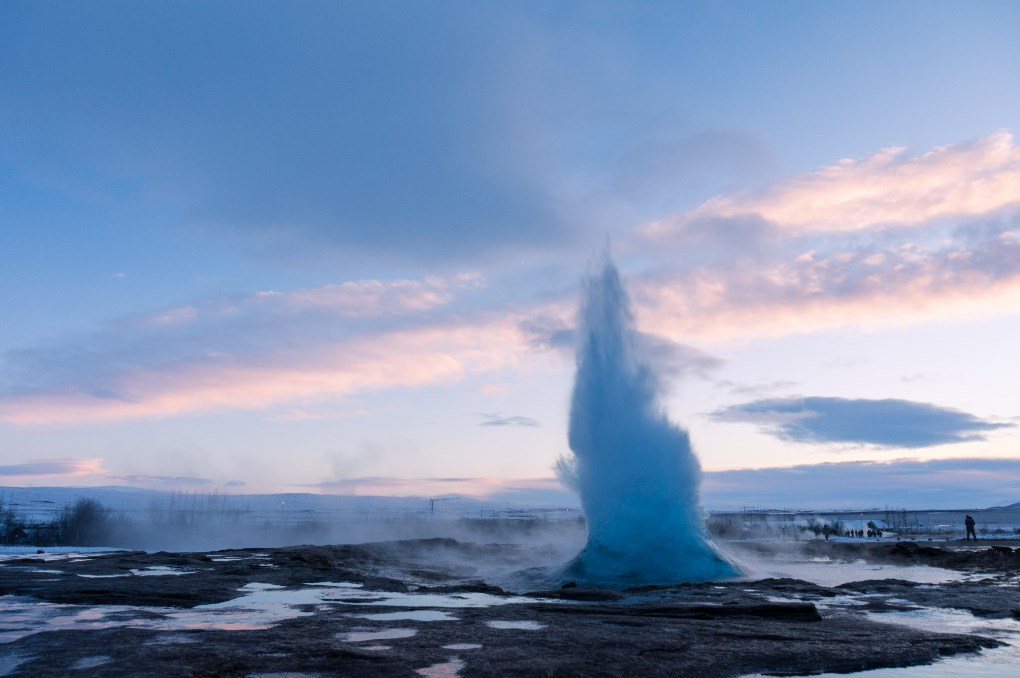
When driving in South Iceland and renting a car here, we recommend booking ash, sand and gravel car insurance, as the region is very windy, risking damage to your rented vehicle.
Ring Road Top Attractions in East Iceland
As you move counterclockwise to East Iceland, here’s what to see and do, and where to stop.
- Hofn — a small fishing town popular with travellers visiting the east
- Vestrahorn Mountain at Stokksnes — a very photogenic mountain that rises out of Stokksnes Beach
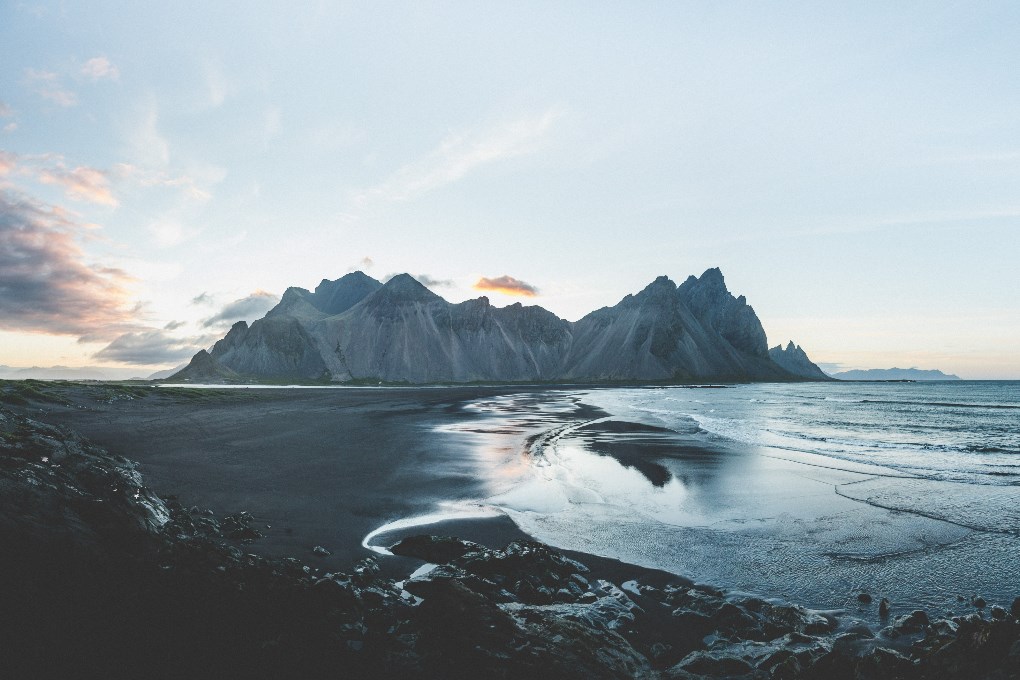
- Egilsstadir — the Capital of the East and largest city in Iceland’s eastern half
- Hallormsstadur Forest — Iceland’s largest forest and made up of primarily birch
- Hengifoss — the third-highest waterfall in Iceland
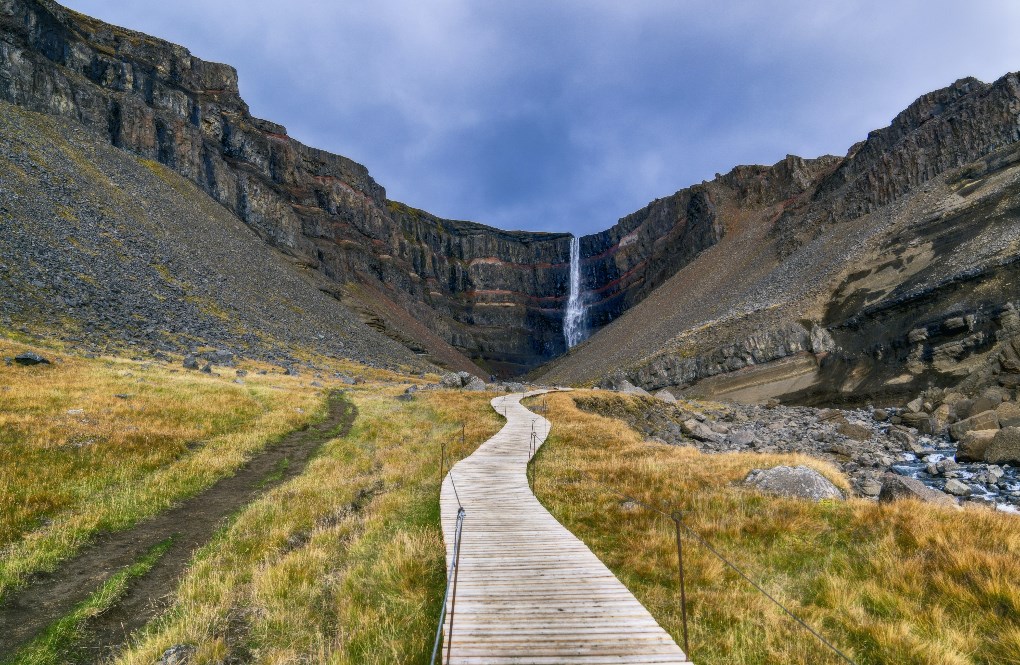
- Seydisfjordur — a picturesque little town known as the heart of culture, heritage and hospitality in Eastern Iceland
- Djupivogur — a small fishing village on the coast, with mountain views
- Lake Lagarfljot — a large, narrow lake where a lake monster lives, according to Icelandic legend
- Borgarfjordur Eystri — an ideal spot to birdwatch, especially for puffins
Ring Road Top Attractions in North Iceland
Once you reach the north, you’ll find a lot of interesting attractions; however, there are also a lot of possible detours here. Here’s where to stop along the northern region of the Ring Road, as well as what’s worth a detour.
- Lake Myvatn and the Myvatn Nature Baths — one of the larger thermal pools in Iceland and similar to the Blue Lagoon, in a tourist-friendly lake town
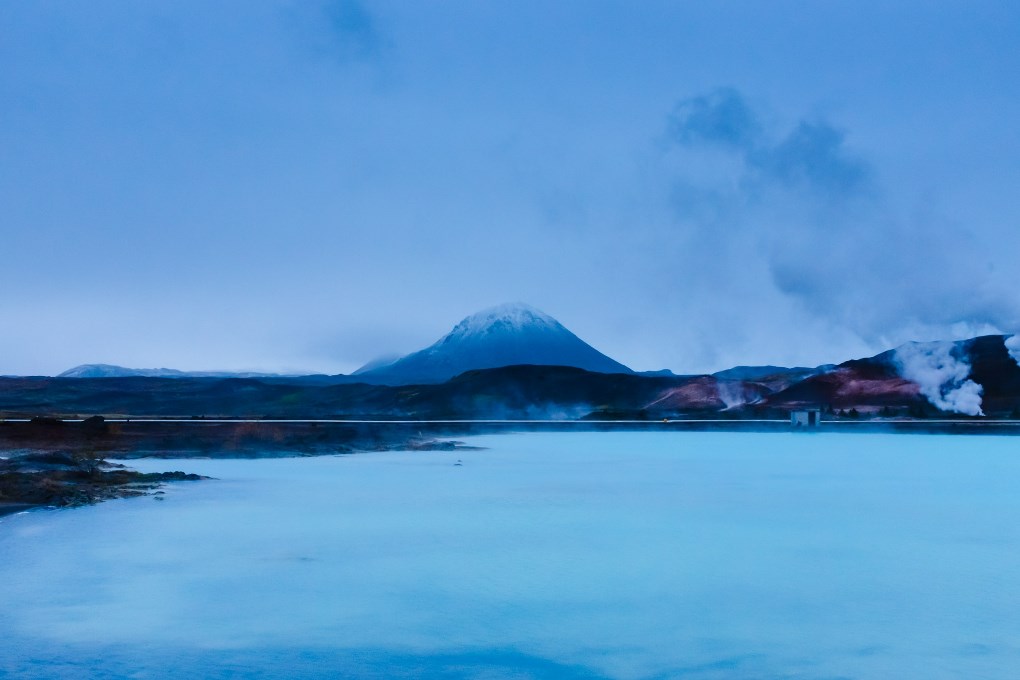
- Namaskard Geothermal Area — home to lots of fumaroles and hot springs
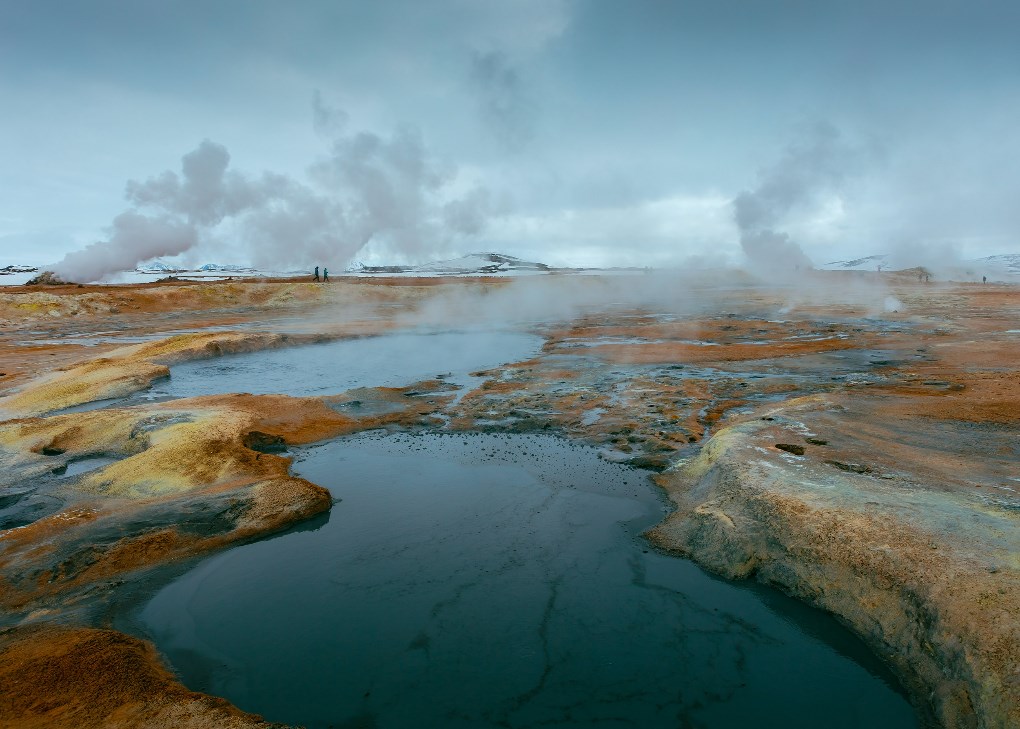
- Grjotagja — a lava cave where you can bathe in the underground hot springs
- Godafoss Waterfall — one of Iceland’s most beautiful waterfalls and literally named “the waterfall of the gods”
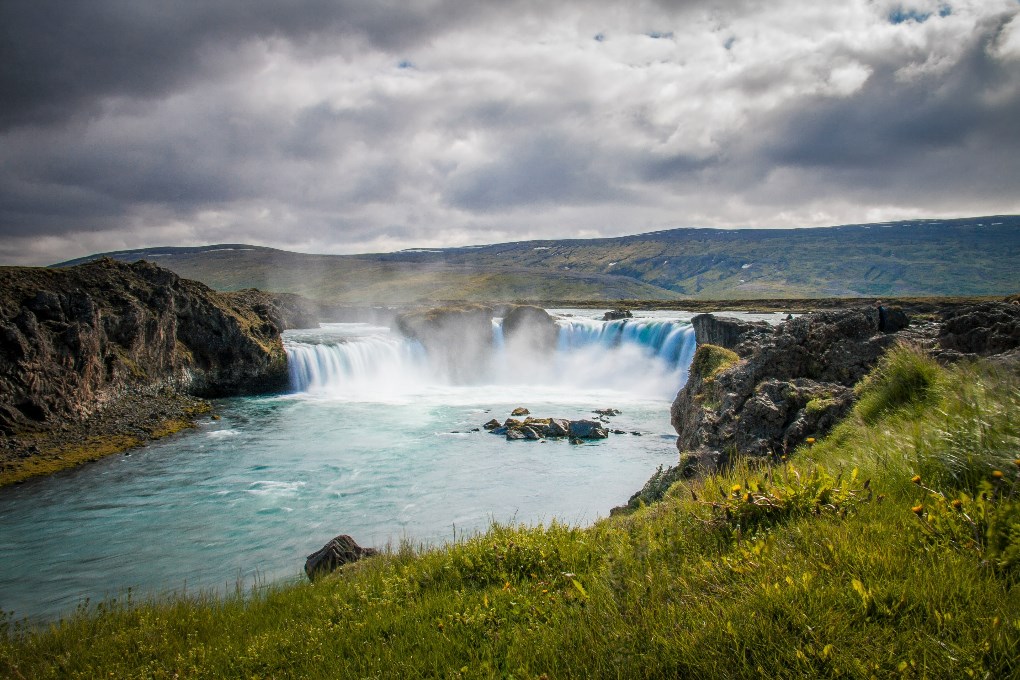
- Hvitserkur Rock — a sea stack offshore that looks like a dragon drinking the ocean
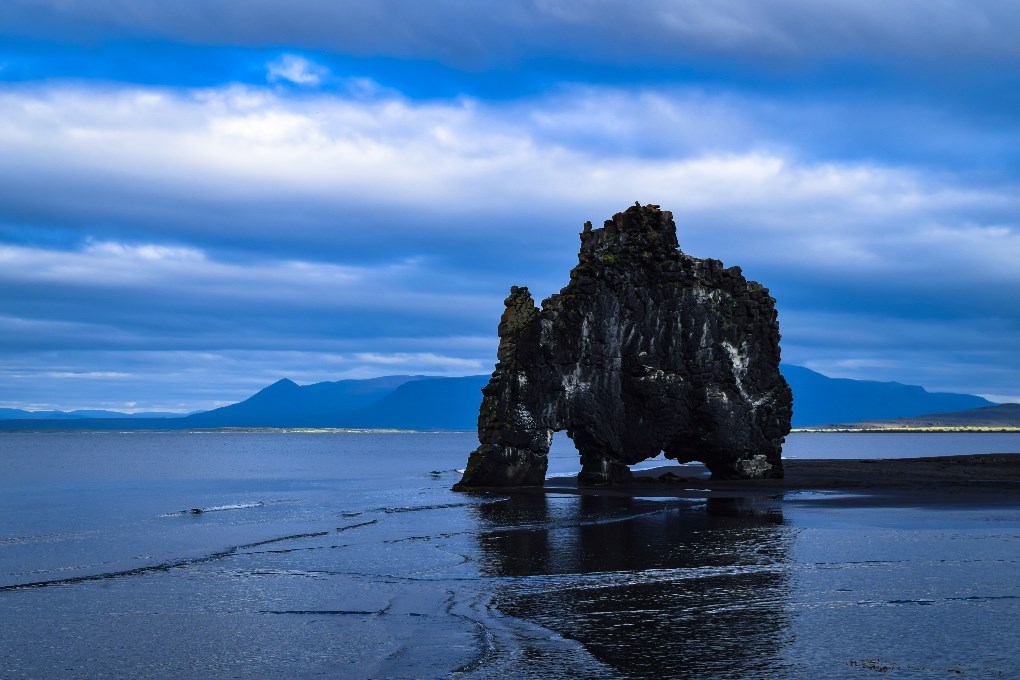
- Akureyri — the Capital of the North and Iceland’s second-largest city, after Reykjavik
Want to take a detour while you’re travelling through northern Iceland?
Some of the spots worth taking a detour for include Dettifoss Waterfall, the second-most powerful waterfall in Europe; Asbyrgi Canyon, a horseshoe-shaped glacial canyon; and Husavik, a small town in Iceland renowned for its whale watching and now known for its appearance in the movie Eurovision Song Contest: The Story of Fire Saga.
Ring Road Top Attractions in Western Iceland
The majority of the best spots to see in western Iceland are off of the Ring Road and require a detour. Some of the spots you can still see without a detour, though, include:
- Borgarnes — a small peninsula town known as the gateway to Snaefellsnes National Park
- Mount Esja — a volcanic mountain range (not a singular mountain) popular for hiking
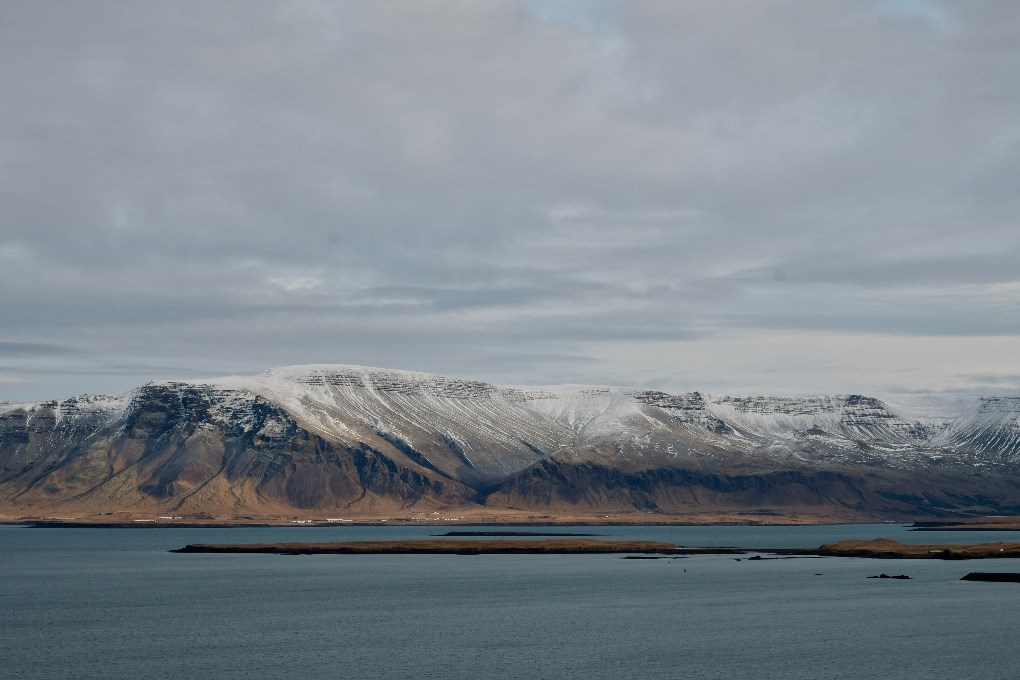
- Reykjavik, of course — the capital and primary urban hub, filled with some of Iceland’s best historical, cultural and modern attractions
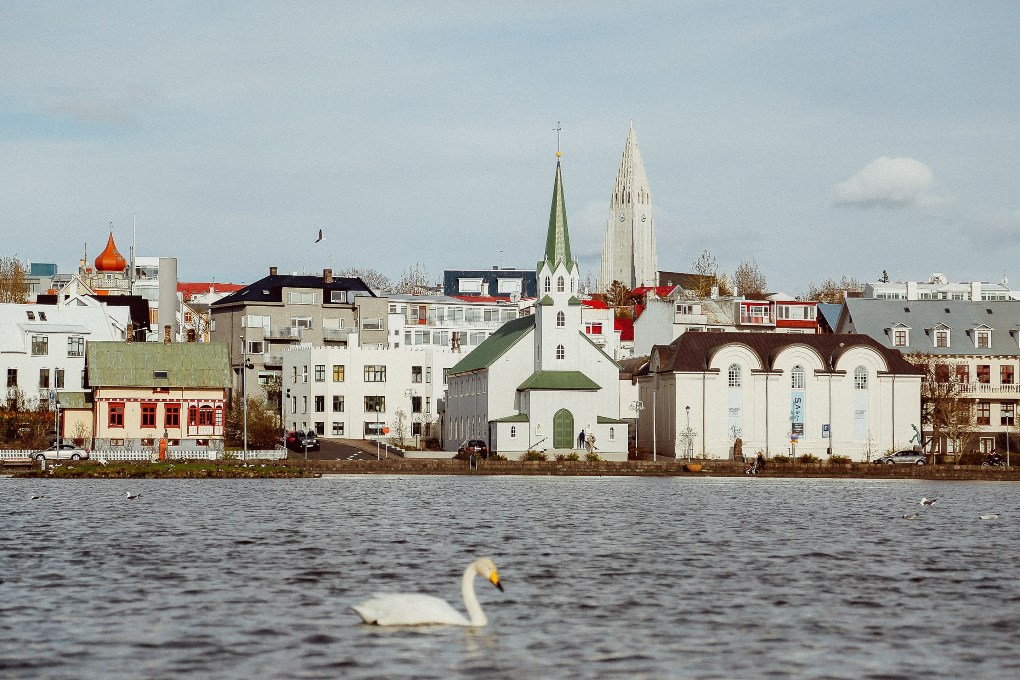
Popular detour destinations in western Iceland include…
- The Westfjords — known for their remote nature and lack of tourist crowds
- Snaefellsnes National Park — filled with black beaches, craters, volcanoes and more
- Reykholt — a small village once known for its intellectual prowess
- Deildartunguhver — the highest-flow hot spring in Europe
- Hraunfossar and Barnafoss — two side-by-side, easy-to-access waterfalls
What is the Best Time to Do the Ring Road of Iceland?
The best time to travel the Ring Road in Iceland will all depend on what’s most important to you and your family.
Do you want the best weather? If so, you should travel the Ring Road during the summer months of June through August, as that’s when you’ll get the most daylight, warmest temperatures and least precipitation.
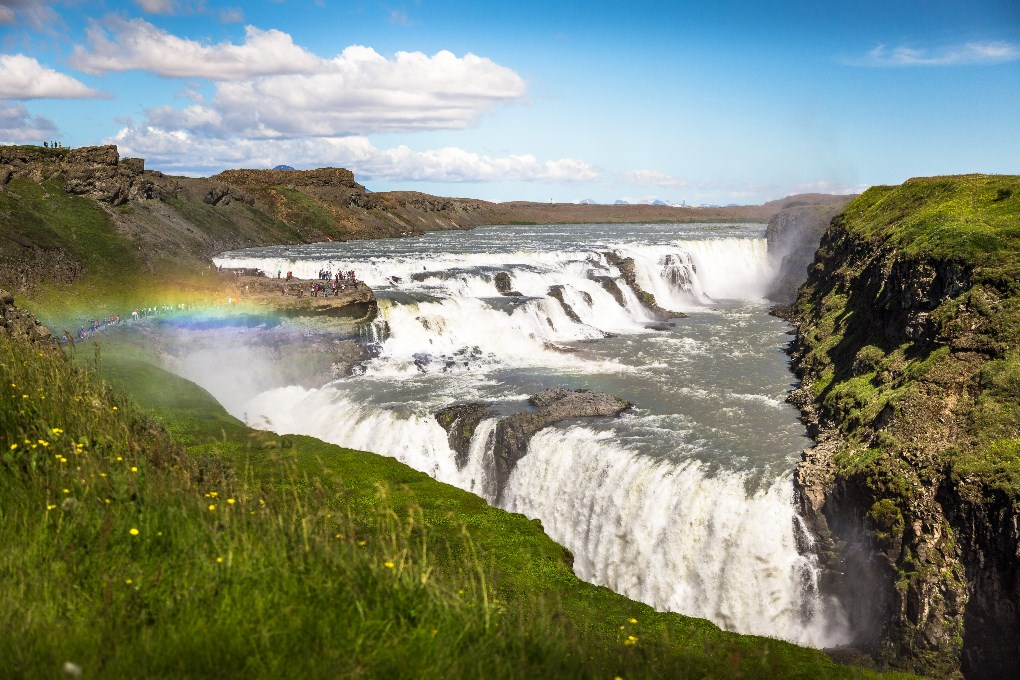
Do you want to avoid tourist crowds? Then visit in the spring, fall or winter.
Do you want to save the most money? Then visit in the winter, but just know that you may run into some bad weather.
Most travellers choose to travel to the Ring Road during the summer months, because of the extra daylight and added convenience.
Want more information about the best time to visit Iceland based on the weather? Check out our full guide to Iceland weather.
Can I drive the Ring Road of Iceland in the winter?
Yes, you definitely can still drive the route during the winter, but you just might not be able to move as quickly around the route and you might run into some bad weather. Still, there are a lot of great benefits to travelling around Iceland during the winter months, including better prices on things like hotels, flights and rentals, as well as the chance of seeing the Northern Lights.
Just keep in mind that the weather will be unpredictable during your trip and you might run into some road closures. Flexibility is key, as are good driving skills. Read more with our full guide on driving in Iceland in the winter.
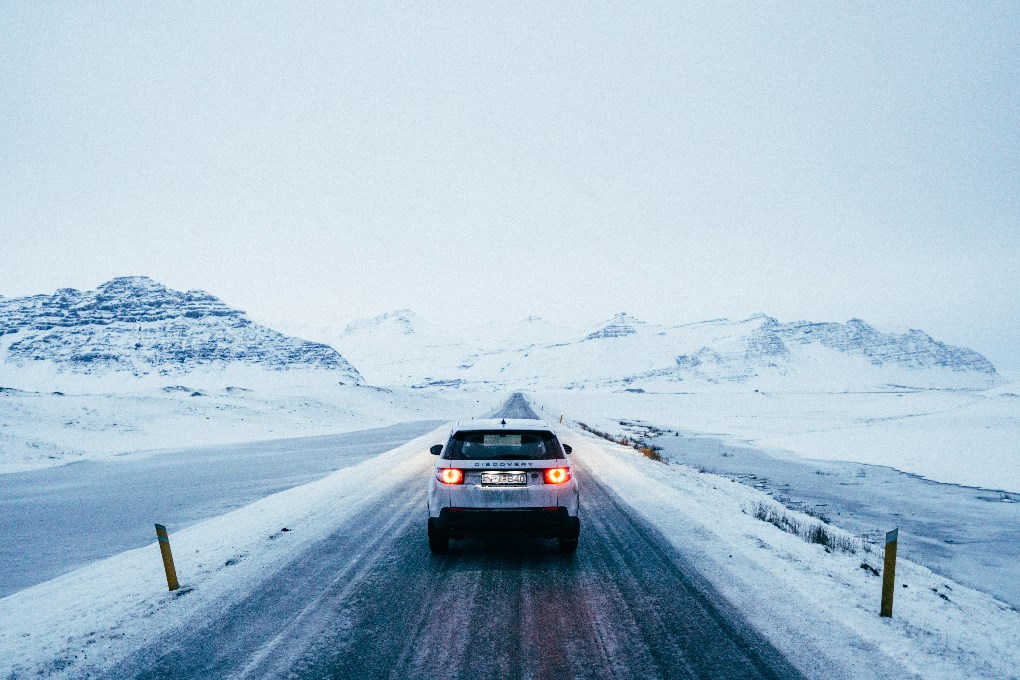
What car do I need for the Ring Road of Iceland?
If you’re planning to rent a car in Iceland for your Ring Road adventure, you’ll want to pick the best car for you.
Rent a 4x4 in Iceland if you’re travelling during the winter or if you plan to take any detours off of Route 1 that will lead you to the Highlands or Westfjords. The most affordable 4x4 rental car for a winter trip would be the Dacia Duster; the largest would be the Land Cruiser, and the most family-friendly option would be the Hyundai Tucson.
Rent a campervan in Iceland if you want to save money on accommodations and camp along your journey.
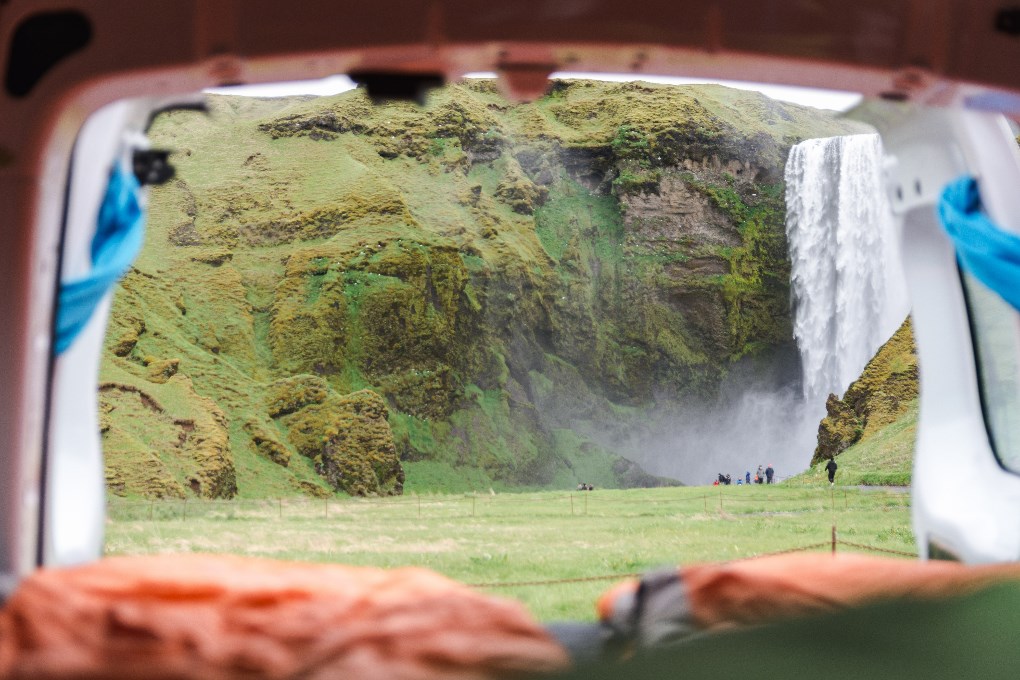
Rent an economy car in Iceland only if you’re travelling during the summer months and only if you’re travelling in a small group of two people, with little luggage.
Is the Iceland Ring Road Worth Travelling?
Absolutely! The Ring Road is the easiest way to see the majority of Iceland without a lot of research on your end. It takes you to most of the top spots in the easiest, fastest and safest way possible.
A Few Closing Tips
We’ll leave you with a few closing tips to prepare you for your Ring Road excursion.
- Take your time and enjoy yourself!
- Don’t underestimate the weather and put safety first.
- Stop for fuel and the restroom when you can; you never know when you’ll get your next chance to do so.
- Always rent a 4x4 car in the winter.
- Rent a campervan in the summer for the ultimate Icelandic camping experience.
- Make sure to set aside a minimum of 7 days for the Ring Road in the summer, and a minimum of 10 days in the winter.
- Keep your eyes peeled for roadside animals, such as sheep.
- Make sure to purchase all the rental car insurance you’ll need for your trip, ahead of your trip.
- Keep an eye on the weather forecast and road conditions as you travel.
- And find more tips for driving in Iceland with our guide!
Ready to get out on the Ring Road? Book your car with LAVA Car Rental today to get started.
See all our car rental options and book now




